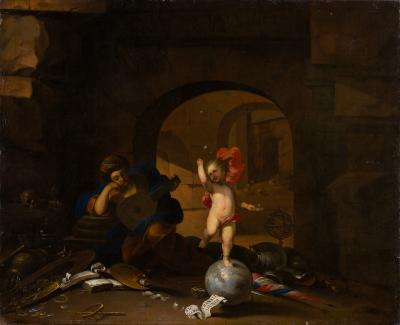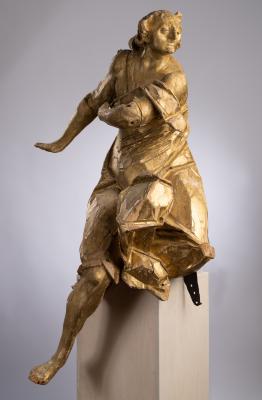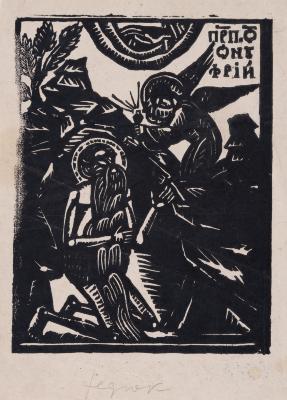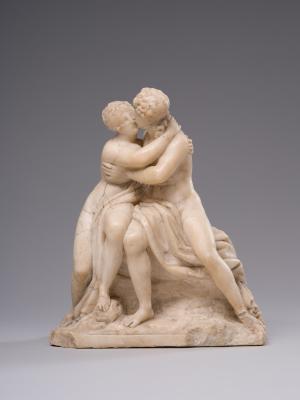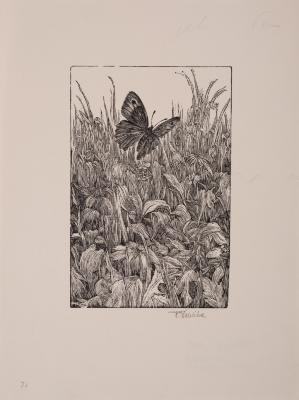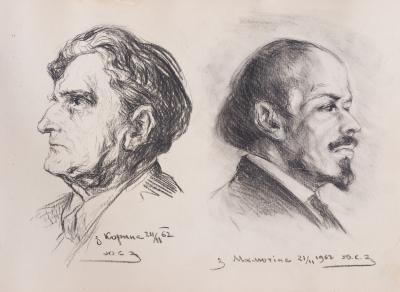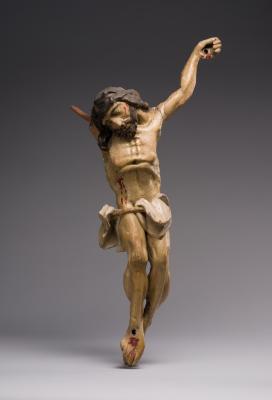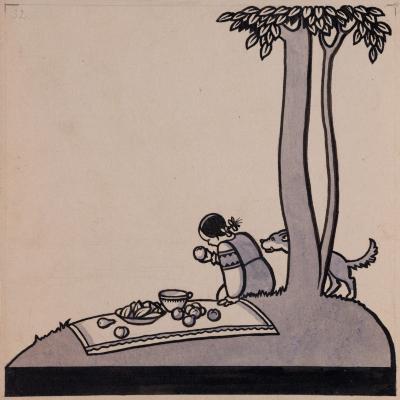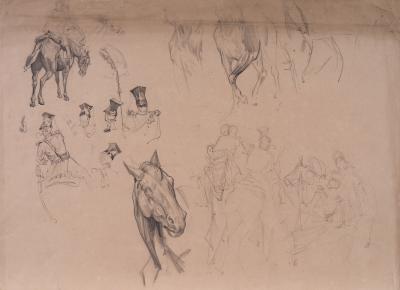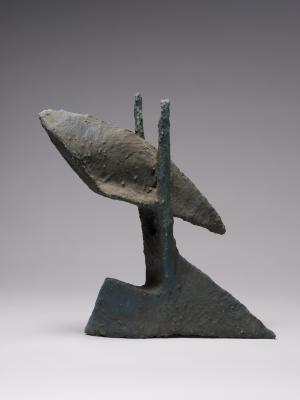The composition is from the Neapolitan series. The image of Micheletto, a Neapolitan warrior since the reign of the proteges of Napoleon Bonaparte and later of Joachim Murat (1806–1815), was first depicted by B. Pinelli in watercolour in 1807. The composition, in which a young Neapolitan woman is pointing the way to two soldiers, B. Pinelli presented in 1809. It was published as a black and white engraving in the album Raccolta di Cinquanta Costumi Pittoreschi (Collection of Fifty Picturesque Costumes). The second version, which is almost identical to the Lviv one, is known from the albums Costumi dei Regno di Napoli (1815) and Nuova Raccolta di Cinquanta Costumi Pittoreschi (New Collection of Fifty Picturesque Costumes) (1816). The Lviv version is completely replicated as a black and white engraving in the album dated 1817. The composition depicts the moment of a meeting of a young mountain girl with two soldiers standing near the path between mighty boulders and trees; apparently, they are guarding the path. The men are standing and leaning on the fusees, wearing a military uniform with ammunition and pistols on their belts. On the head of one of them is a top hat; the other is wearing a bicorne with a red pompom but without a tricolour cockade. They have high boots on their feet. The girl is looking bravely and openly at the military men. She is dressed in traditional but modest clothes: a light shirt with a yellow and blue apron and a crimson skirt. On her feet, there are traditional ciocie. In her left hand, she is holding a basket covered with greenery. She is probably going to church to consecrate the Easter cake. The figures' clothes are painted in bright, saturated colours, particularly in red, blue, and yellow paints. Trees and boulders are depicted in dark brown and green colours. The distant background with mountain range and greenery of trees is performed in blurred blue and green tones.
Micheletto is a popular name for a soldier of the Neapolitan army in the Kingdom of Naples, a French satellite between 1806 and 1815. After the return to power of the Bourbon dynasty in 1816, the name and form of the soldiers, apparently, did not change.






